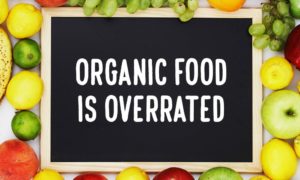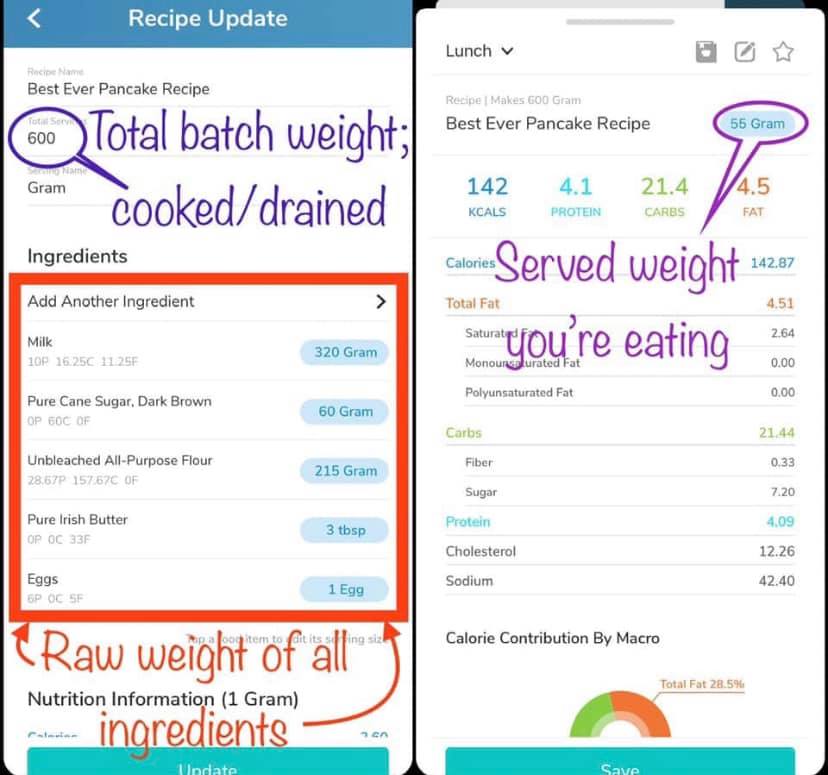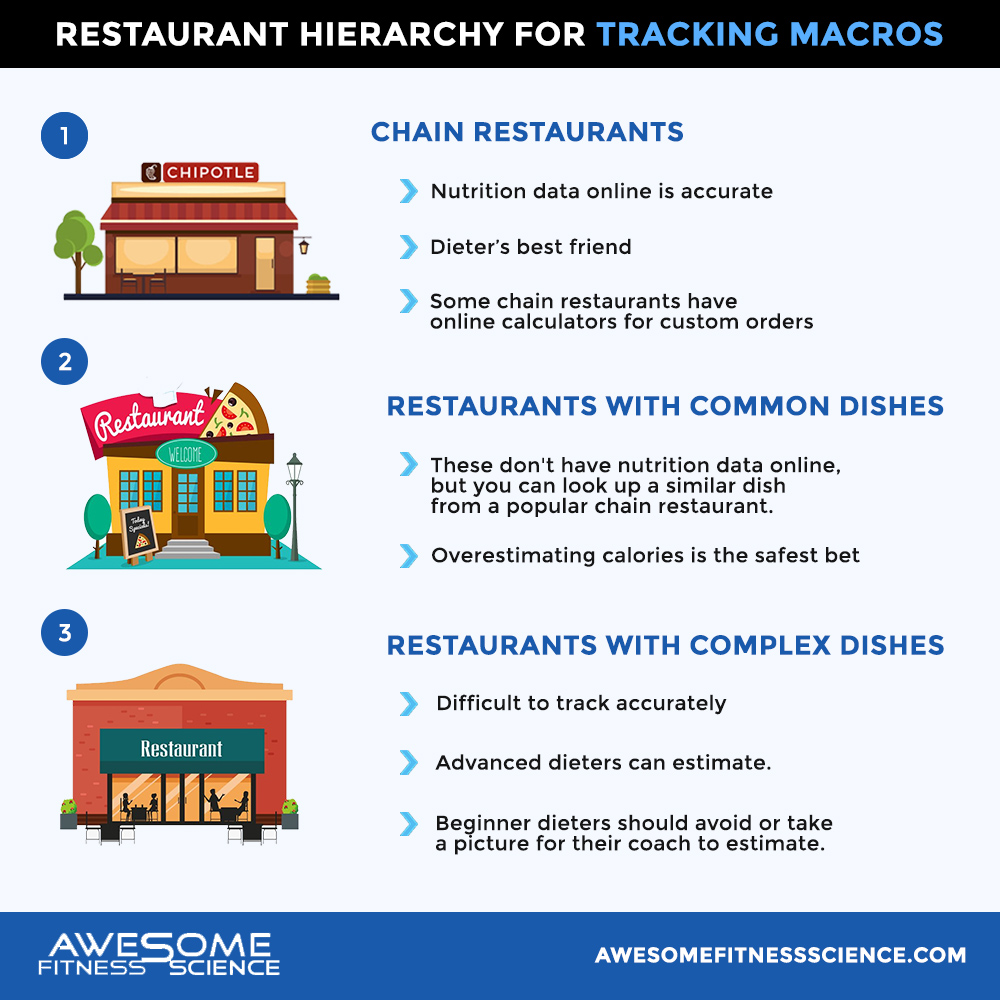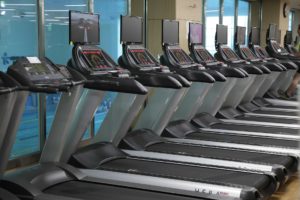
Organic Food is Overrated – 7 Myths Debunked
When somebody claims organic food to be better, that’s a good sign they are clueless about nutrition science and get their nutrition information from dorks on social media.
Tracking macros is the most life-changing skill for your long-term health, fitness, and food enjoyment.
I know it can appear overwhelming and time-consuming, which I’ll admit, it sort of is initially. However, learning to track macros will equip you for life. Tracking teaches you how much you’re actually eating, builds your knowledge of food, and leaves no excuses if done right.
And no, you don’t have to track forever, but it’s critical to commit to learning it at some point. Simply put, you show me a hundred people who don’t know how to track macros and I’ll show you a hundred people who chronically complain about yo-yo dieting.
Yes, learning how to track is a bit more effortful than simply cutting carbs or trying some trendy diet, but tracking allows you to eat whatever the heck you want while still losing weight as long as it fits your macros, hence the popular term “If It Fits Your Macros” (IIFYM).
If you decide to cut carbs, do keto, or hop on the bandwagon of some dumb 30-day vegan challenge, you most definitely can lose weight. But what happens after you lose the weight? You now have to eat that same way forever because you’re at the mercy of the method.
Instead, learn to track macros. Tracking macros grants you control by not restricting food choices. In exchange, you become an economist of sorts. You have a bank of calories allowed and you choose how to spend your calories each day. Nothing is off-limits, but some foods are better investments than others.
For example, 100 calories of broccoli is a better investment than 100 calories of chocolate. They’re both 100 calories, but the broccoli will be more filling. See the picture below.

Regardless, if you don’t overspend your calories consistently, you’ll be burning more calories than you eat over time which is called a caloric deficit. Stay in a deficit long enough and you’ll be forced to lose weight even if you eat some junk food. Mind-blowing right?
Your daily caloric targets depend on your muscle mass, activity levels, and how fast you want to lose weight.
Without getting into crazy logistics, start with 9-13x your bodyweight. More active people will be better suited for the higher end of the range while less active people will be better suited for the lower end of the range. If you’re not losing weight after 2 weeks of perfect adherence, you can always drop your calories.
You might hear tracking macros and tracking calories used synonymously. They’re basically the same thing (sort of). Calories are the energy we take in and burn off from food.
Macros refer to the 3 primary macronutrients, protein, carbs, and fat. Technically, alcohol is also a macronutrient. All macronutrients contain calories which as discussed earlier determines the fate of your long-term bodyweight.
When you track macros, you’re essentially also tracking calories because the combination of these nutrients will determine how many calories a food contains.
Take a look at the nutrition label below.

If you do the math, the calories add up roughly to the label. It’s not always exact because food labels sometimes round calories down or they ignore counting fiber calories.
But anyways, if you’re a beginner, simply focus on the calories, the macros (protein, carbs, fat) that make up those calories, and the serving size or number of grams. Everything else on the label is pretty much irrelevant at this point.
So if the label says it’s 200 calories for 82 grams, that means each serving or every 82 grams is 200 calories.
Before I move on with the article, I want you to take a few deep breaths if you’re feeling overwhelmed. This is the part where I remind you to keep reading and learn this macro tracking shenanigans.
Don’t click off because you feel doubt creep in. I grew up with remedial math classes and I can track macros. I promise anyone can do this, it’s easier than you think and you have to learn it at some point in your life.
Let me break it all down further for you.
Now that you have the basics of how to read a food label, let’s run through how to go from nutrition newbie to macro master in a matter of minutes.
Most people use the free app, Myfitnesspal, which is fine and gets the job done. However, Mymacros+ is my default recommendation because it’s easier to use and has more accurate food entries. MM+ does cost $3 as a one-time payment, but if you’re too cheap, I’ll buy it for you. Simply email me your Venmo and I’ll spot you. That’s how much I prefer MM+.
Regardless, any app should be fine. You simply need something to log your food and add up your calories/macros for you. Everything else about an app is fluff. Never depend on the app to calculate your calories for you or rely on unverified food databases.
Get a food scale on Amazon that tracks in grams. Don’t overthink it. I have this one. And yes, you have to get a food scale. And no, a food scale is not time-consuming or obsessive. It will be a tool that gives you the precision needed to finally lose fat and keep it off (1).
In addition, get measuring cups. They are useful to measure liquids or when weighing foods out on a scale is not possible.
Now let’s go over tracking different types of foods.
Anything with a food label, use the food label. It’s quick and easy.
For something like a granola bar where you’ll eat the full serving size, you don’t have to weigh it out in grams, but you’re welcome to if you want to be extra accurate.
However, for foods you’re portioning out like pasta, cereal, oatmeal, or ground beef, you should weigh it out in grams in its dry or raw form. Food products are analyzed for their nutrition facts in the form they’re sold to you.
So meat should be weighed raw. Rice, oatmeal, veggies, etc should also be weighed dry or precooked.
It’s also important to note that anything you plan on eating again should be saved under customs and favs. This will save time in the future and make tracking effortless.
In fact, most of the entries you make should be custom entries. Searching up a random entry from a user you don’t know can be inaccurate.
When you buy food with no label, don’t freak out. Instead, simply use one of these sites to find the macros on that food.
For example, if your bag of honeycrisp apples don’t have a label, you can look up the calories in honeycrisp apples in grams.
Making recipes or cooking in bulk is wise. This allows you to make tastier food along with saving you plenty of time during the week.
Here’s how to track these:

Now, whenever you eat that recipe whether it’s right then or the following day, you simply weigh the cooked portion and you’ll get accurate macros on how much you’re eating. This will work whether you’re making a casserole for your family or simply cooking a bunch of rice for the week.
Here’s the general hierarchy of restaurant selection when eating out.
Chain Restaurants: Popular chain restaurants or any restaurants with their nutrition data online is accurate. Make sure you look at their website for restaurants instead of searching the app’s database. This will ensure you get the most updated data on the restaurant’s dishes and not some random dork’s estimate.
Chain restaurants are a dieter’s best friend when eating out thanks to the accuracy. Some places like Chipotle even have a calculator to account for custom orders.
Restaurants w/ Common Dishes: More niche restaurants don’t have their nutrition data online. Jerks right? I know, but if the dish is common, you can look up the same dish from a popular chain restaurant. Choose the chain restaurant you feel that has the closest or bigger portion size. No matter what, it won’t be perfect, but it’s better than not tracking.
For example, if you eat an Asian chicken salad at some no name restaurant, you can log the Asian chicken salad from Cheesecake Factory.
Restaurants w/ Complex Dishes: What If I eat a 70-ingredient beef wellington from Gordon Ramsay’s extremely niche restaurant? In general, I suggest beginner dieters avoid extremely complex dishes made by someone else.
If you’re confident in your abilities to estimate macros or can find a reliable entry somewhere online, feel free to do so, but consuming these dishes often lead to highly inaccurate macro tracking.

Here are the 3 most common mistakes with tracking:
First is not logging everything. Your body tracks everything whether you do it or not. You’re only cheating yourself if you’re dishonest with what you log and don’t log. This doesn’t mean everything has to be weighed out extremely accurate, but everything must be accounted for roughly.
Anything with calories that enters your mouth must be logged in the app.
The next mistake is oil spray. They say 0 calories, but they’re rounded down. In reality, they’re 7-9 calories of fat per 1-second spray. I still encourage you to use oil spray though. They will save you more calories than pouring out olive oil from a bottle. Or better yet, get a good non-stick pan and you won’t have to use any oil.
The last mistake I see is people make is giving up with tracking like children who throw tantrums after losing 1 game of Uno. Anyone can track. Yes, it takes some time and effort at first, but like anything else, with practice, it eventually becomes effortless. The research concludes that even in newbies, it takes no longer than roughly 15 min per day (2).
Merely having the skill of tracking macros allows you to utilize it whenever you need to get more serious with your goals. Not having this skill keeps you running in circles with your weight loss for the rest of your life.
So stick to it for at least 4 months and you’ll be glad you did. Email me if you have any specific questions. I’m more than happy to help.
Sign up for AwesomeFitnessScience Weekly. You’ll get juicy insider secrets, updates, and stories.

When somebody claims organic food to be better, that’s a good sign they are clueless about nutrition science and get their nutrition information from dorks on social media.

There’s a stigma about cardio causing muscle loss that sends chilling fear down a meathead’s spine. Maybe you can relate and get a little frightened walking past a treadmill knowing that merely touching it could cause your precious biceps to shrink away.

Red meat has been the blame for bad health for decades now. Apparently, eating a mammal’s nutrient dense flesh is going to infect your body, give you cancer, and put you in a grave before you can meet your grandchildren.